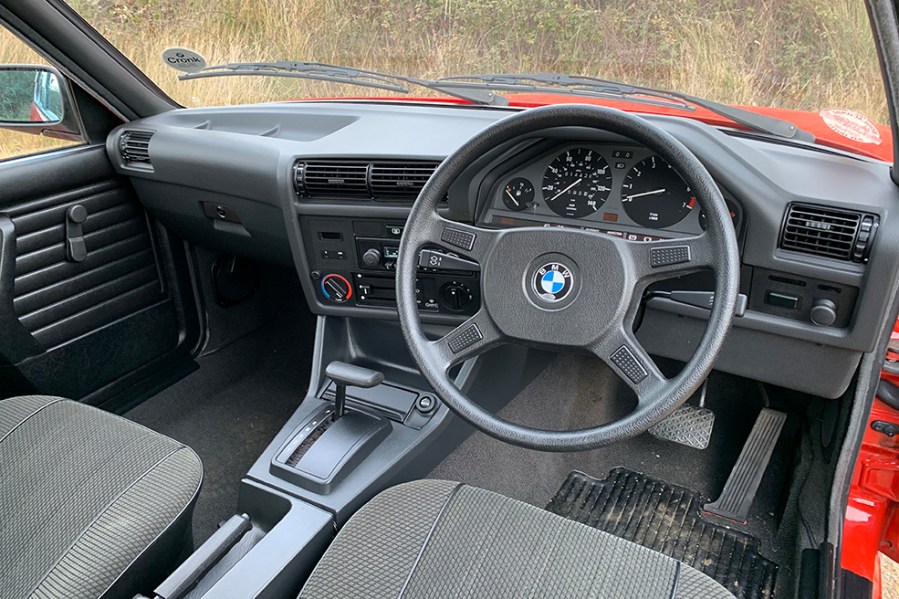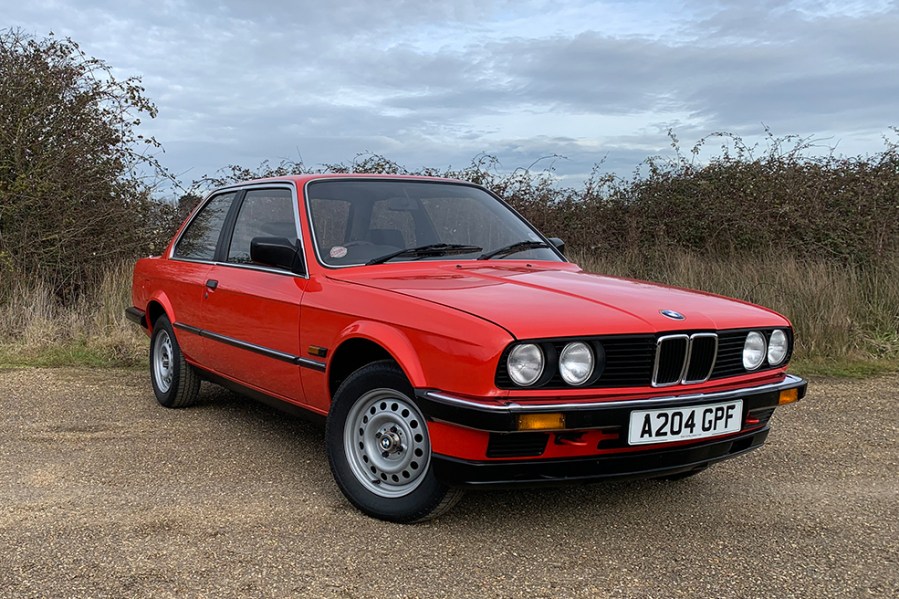Arriving in the UK 40 years ago, the E30 3 Series really set BMW on its way to mid-market success. We experience an early example of the 316
Words and images: Jeff Ruggles
Back in the 1970s, it was all a lot easier. Success and image were measured by what letters appeared on the back of your Cortina or one of its fellow British rivals; but come the image-conscious early 1980s, it was more about brand itself. A new breed of compact executive models like the Mercedes-Benz 190E and BMW E30 3 Series opened a new gateway into a hitherto unachievable prestige fold, setting a ball rolling that still hasn’t run out of momentum.
In the case of the BMW, the E30 arrived at just the right time to ride a new wave of 1980s yuppie aspiration. It wasn’t the first 3 Series – that honour belonged to the neat but rather left-of-field E21 model launched in 1975 – but it was the car that kick-started BMW in the UK, building on the success of the excellent E28 5 Series that had been launched in 1981.
Launched in autumn 1982 and arriving on British shores early the following year, the E30 looked similar to its E21 predecessor but was in fact almost completely new. Nevertheless, the styling remained conservative, with the car’s blunt front end, quad lamps and slim but solid chrome bumpers already looking old fashioned against the modernist plastic-clad approach of the contemporary Cavalier and Sierra. The driveline was also kept conventional, with a longitudinally mounted engine driving the rear wheels, and standard equipment levels were often sparse. However, the car enjoyed strong build quality, while a host of subtle engineering touches all added up to impressive levels of refinement.
With the cachet of the BMW badge added to the mix, the E30 was an immediate hit. The sales figures for the UK market certainly tell a story: BMW sold us just 6463 E21 3 Series in 1980, but in 1983 we bought 14,214 of the E30 and by 1989 British buyers were hoovering up 29,000 of them every year – 59 per cent of the brand’s total sales here.
The E30’s popularity was encouraged by an expanding model range. At launch, you got the carb-fed 316 with an 89bhp 1766cc SOHC M10 four, a 320i with an LE Jetronic-injected 1990cc 125bhp straight six and the 139bhp 2316cc 323i. The latter was bounced up to 150bhp by September with a few tweaks, at which point the 3 Series became available with four-doors for the first time, along with the 105bhp 318i joining the range with its fuel-injected version of the M10 four-cylinder.

A Baur Targa roof became available in 1984, and the full convertible arrived on these shores 1986. By that time, the 323i had given way to the 325i with Bosch Motronic engine management, making 171bhp from 2494cc. The desirable 325i Sport arrived for late 1986, with the same year also seeing the birth of the now-famous homologation special, the M3.
In late 1987, the E30 was given a facelift, identifiable by plastic bumpers, bigger tail lights, ellipsoid headlights and the lower cut rear arches from the Convertible. It was also time for another 3 Series first with the launch of the Touring estate, which itself kick-started a new market niche – that of the ‘lifestyle’ estate pioneered by Reliant with the Scimitar GTE.
E30 saloon production would wind down in late 1990, replaced by the E36 launched in early 1991. The Convertible and Touring continued up to 1993 however, replaced in 1994 by their E36 successors. In all, almost 2.5 million E30s were produced compared to around 1.3 million for the E21, emphasising its considerable success.
The car we are driving is probably as close as we will get to an E30 in its purest form. It’s about as near to the genesis point as possible, being a basic 316 that’s covered a mere 14,400 miles. Offered for sale by specialist dealer Kim Cairns Classics in Norfolk, the automatic example was supplied new by Conk Garage of Reigate, Surrey in April 1984 and remains in totally original condition, rare steel wheels and all. It’s finished in its original and immaculate Henna Red paint, perfect grey trim and an unused toolkit in the boot. No, it’s not cheap at almost 19 grand, but it’s probably one of the most original 316s left in the world, and given how well an E30 can rust, spending out on a mint example is likely to be more cost-effective than a restoration.
Settling into the unmarked cabin, you’re hardly blessed with creature comforts, with wind-up windows and only a very basic Blaupunkt radio. Yet the driving position is excellent, with everything well laid-out and precise controls. There’s a real feeling of quality and sturdiness too, with no fussiness for the sake of it. Turn the key and the engine fires up dutifully, and though there’s an over-fast idle for a few seconds, it quickly settles down to a smooth and impressively quiet purr.

Out on the road, this isn’t a fast car, with around 90bhp and a three-speed ZF automatic gearbox. Getting the gearbox to kick down takes some effort and you won’t be winning any races, but the trusty M10 is a smooth unit, especially with this mileage. Indeed, the car cruises at the legal limit with ease and does so in a quiet and fuss-free manner. It’s easy to see why the E30 was widely praised for its refinement, even in this basic 316 guise.
We didn’t want to push this mint example too hard, so any recreations of the sideways antics experienced in a mate’s old 318 at the turn of the millennium were out. However, the handling feels well-balanced and doesn’t feel like it would step out of line unless you worked really hard to provoke it – at least in the dry. Indeed, road testers at the time praised the E30 for being far less tail-happy than the E21. The ride is also good, with the supple suspension managing to be comfortable without too much body roll or harshness. The steering has no power assistance and feels fine when cornering, but it lacks a bit of feel and its low gearing (four turns lock-to-lock) makes parking quite hard work.
Overall, it’s a very competent package, and one that manages to feel premium despite being basic in terms of features and equipment. Nowadays the E30 enjoys cult status, although in truth it’s the more powerful variants that are mostly responsible for that. Without the power or sporting prowess of the loftier models, the 316 feels, dare we say it, a bit too clinical. It does everything you’d expect of it very well, but lacks that wild side to step out of line and set your pulse racing.
Frankly though, that doesn’t really matter. As a usable classic to cherish, an early 316 has strong appeal, and dare we say it, has more of a curiosity factor than its loftier stablemates thanks to its rarity. Indeed, it would no doubt turn plenty of heads at shows and events – just like this one did when put on display at the NEC Classic Motor Show.
Indeed, this particular 316 is surely now a unique survivor, and as an insight into when premium brands became achievable for those without the deepest pockets, it serves as the perfect time warp.

















